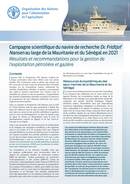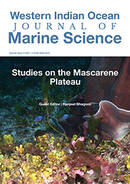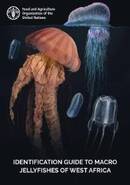Technical documents

In 2018, the state-of-the-art research vessel Dr. Fridtjof Nansen of the EAF-Nansen Programme conducted a survey of the waters off the coast of northern Mozambique, using its advanced technology and equipment to collect data and information on the resources in the area. The expedition provided a great opportunity to bring this ocean area to the attention of scientists and ocean enthusiasts, both to increase knowledge of its beauty and raise awareness of the challenges it faces. Using the findings from the research survey, this book will take you on a journey through the marine landscape. You will learn about the diversity of its unique and beautiful fauna, as well as signs of human impacts on the habitats and species of the Cabo Delgado province.
Em 2018, o navio de investigação de última geração Dr. Fridtjof Nansen do Programa EAF-Nansen realizou um levantamento científico das águas ao largo da costa Norte de Moçambique, usando a sua tecnologia e equipamentos avançados para recolher dados e informações sobre os recursos na área. A expedição proporcionou uma grande oportunidade para chamar a atenção de cientistas e entusiastas do oceano para esta região oceânica, tanto para aumentar o conhecimento sobre a sua beleza quanto para sensibilizar para os desafios que esta enfrenta. Usando os resultados obtidos durante o cruzeiro de investigação, este livro irá levá-lo numa uma viagem pela paisagem marinha. Irá aprender sobre a diversidade da sua fauna única e bela, assim como sobre os sinais dos impactos humanos nos habitats e espécies da província de Cabo Delgado.

Depuis 1975, le Programme EAF Nansen soutient lespays partenaires dans leurs efforts pour une pêche durable. Plus récemment, outre la pêche, des travaux ont été consacrés à la lutte contre les pressions liées à l’activité humaine sur les écosystèmes marins, notamment les activités d’exploitation pétrolière et gazière, reconnaissant que celles-ci peuvent représenter une menace pour la durabilité des pêches et des écosystèmes. L’augmentation des activités d’exploitation pétrolière et gazière en l’absence de programmes de suivi adéquats représente une source majeure de préoccupation. Dans ce contexte, le Programme EAF-Nansen, avec le N/R Dr. Fridtjof Nansen, aide les pays partenaires à établir des bases de référence pour la mise en place de systèmes de suivi dans les zones où des activités pétrolières et gazières sont en cours de développement. Suite à une demande des Gouvernements de la Mauritanie et du Sénégal, une campagne scientifique a été organisée entre le 22 octobre et le 16 novembre 2021 avec l’objectif principal d’élaborer une base de référence pour le suivi futur des impacts possibles des activités pétrolières et gazières en mer dans la région située entre les 17º et 15º sud. Le plan d’échantillonnage a suivi les «Directives pour la suivi de l’impact environnemental des activités pétrolières et gazières en mer de la Convention OSPAR pour la protection du milieu marin dans l’Atlantique Nord-Est». Des résultats préliminaires sont déjà disponibles sur les habitats benthiques. Ils sont présentés dans cette note en raison de leur pertinence pour les développements en cours dans l’exploitation du gaz en Mauritanie et au Sénégal.


This identification guide includes 552 species of mesopelagic fishes (i.e. those fishes residing primarily between 200-1000 m depth during daytime) that are known to occur in the central and south east Atlantic Ocean. Fully illustrated dichotomous keys to all taxa are provided. Species are treated in detail, with accounts including the scientific name, FAO common name in English (where available), other useful characters, size, a distribution map, and one or more illustrations. To facilitate even further the identification of the taxa, captions and arrows are added to help users quickly locate their key morphological features. The guide is intended for both specialists, and nonspecialists who have a working knowledge of ichthyology.

This identification guide includes 56 species of macro (> 5 cm in diameter) jellyfishes (cnidarians, ctenophores, and thaliaceans) that are known to occur off the coast of West Africa. It provides fully illustrated dichotomous keys to all taxa, an illustrated glossary of technical terms for each main group, and species accounts including the scientific name, diagnostic features, colour, size, ecology, stinging, geographical distribution, and one or more illustrations. The guide is intended for both specialists, and non-specialists who have a working knowledge of biology.
